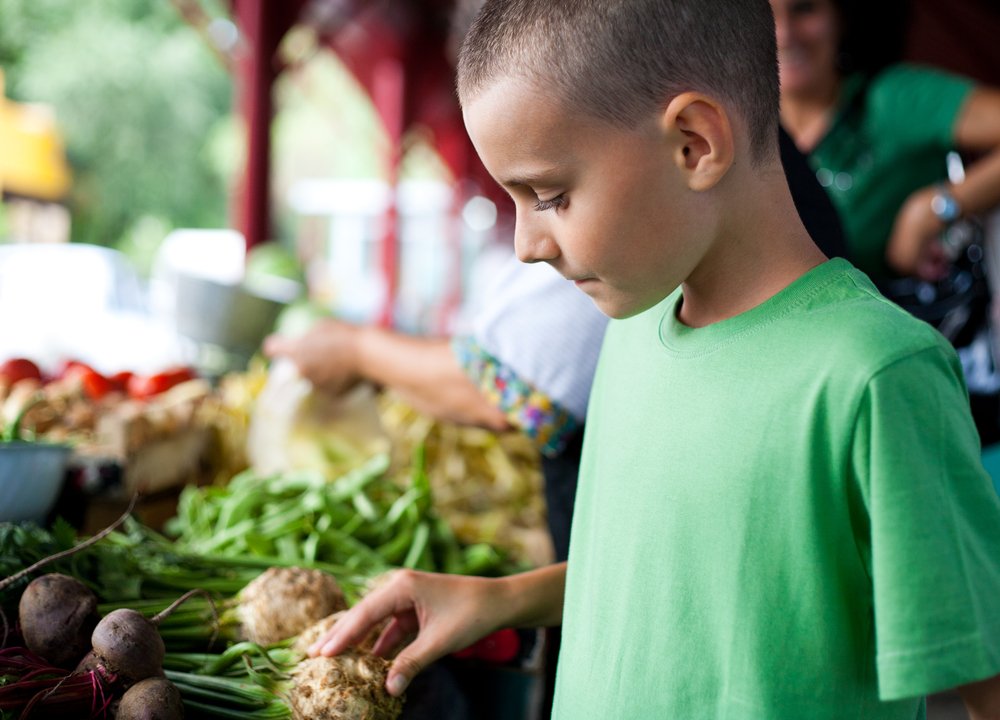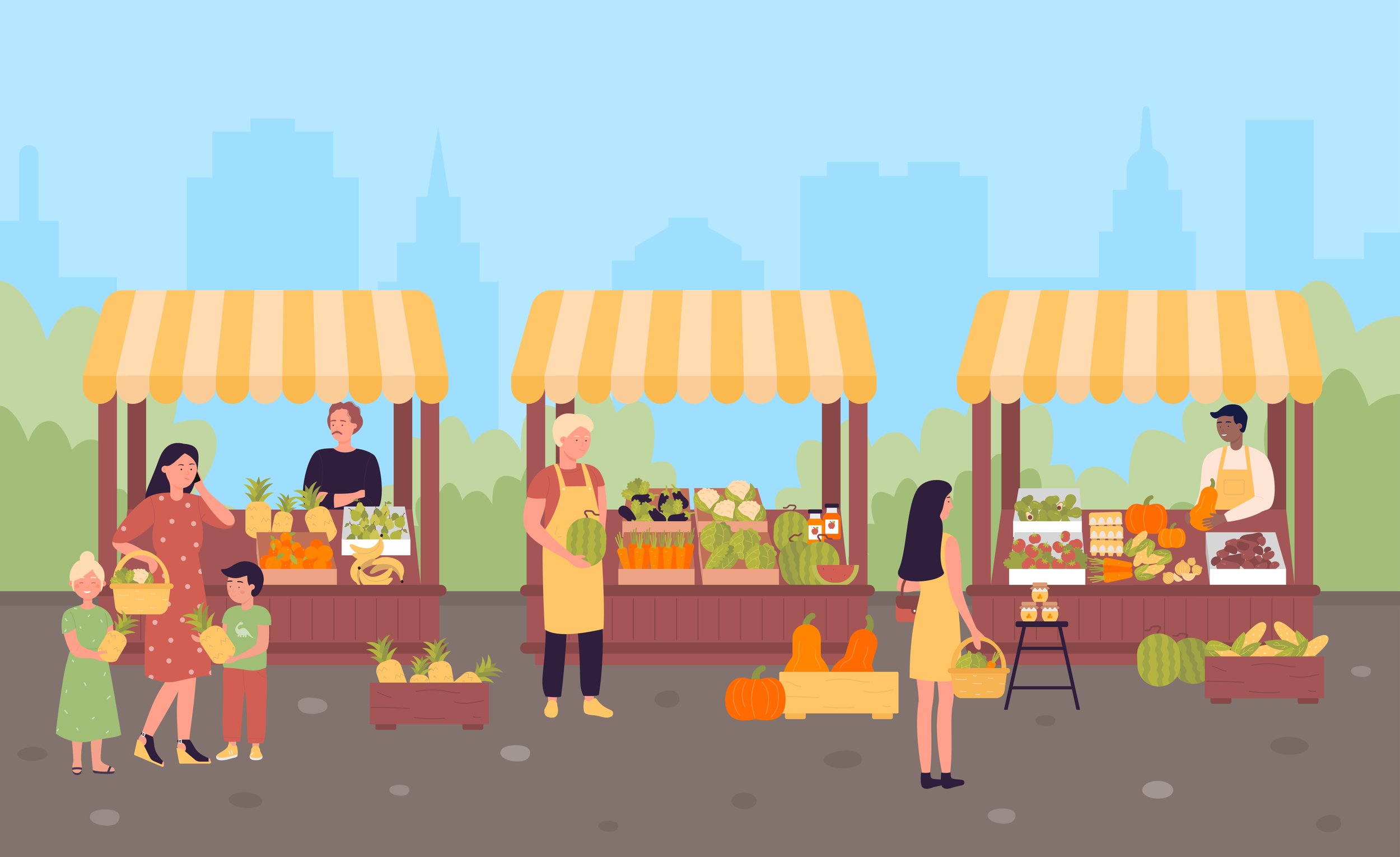practical family guide to seasonal eating
It's the beginning of November, and so many cozy family holidays are ahead of all of us! The same way we follow the yearly calendar and its different seasonal and holiday traditions and celebrations, we can all start adopting a more seasonally-focused diet, too.
It's usually during the autumn, after the rich and abundant summer harvest when the conversations about the importance of seasonal eating are at their peak. Transitioning from season to season comes with changes in nature and its gifts. And seasonal eating is one of the healthiest lifestyles that we can adapt - it's good for the body, for the community, and for the planet.
That's how our ancestors were eating more than 100 years ago. Before science got involved in agriculture, we could only find fresh produce during the seasons they grew best. Back then produce relied on weather and other natural growing conditions.
Nowadays, we can find pretty much any fruit or vegetables all year round. It's comfortable, but it has its high cost, which is nutritional, and environmental.
Seasonal eating, on the other hand, is a lifestyle that helps us to take better care of what we put on our plates and how it's obtained from nature. And it's an important habit to introduce to the little ones because it will help them become people who are living in the rhythms of nature, and that's a natural, nourishing, and sustainable way of living.
What is sustainable eating and how do I explain my children?
Sustainable eating is honorable to nature, to our bodies, and to the Earth. It's based on having a deeper understanding of food, how the natural systems work, and what is the full path from seed to plate.
Everything we consume, from seeds to vegetables, fruit, meat, fish, milk, even eggs, has its own season. Seasonal eating respects the natural world and what it's providing to us on its own terms. This is a special opportunity to connect with it and to establish an honorable and thankful relationship with it. It's about making the most of something that is currently available to us and thinking creatively about how to make it last longer.
Seasonal eating is a decision to pay attention to the natural changes happening in the geographic area where we live. It's a way to preserve nature - from better attention and care for the soil, respectful practices towards the local habitats, to lack of transportation pollution.
To eat what's available and natural for each season pretty often means to eat locally, which is reducing your carbon footprint by not transporting food over long distances.
What's more, when we eat locally, the produce is harvested at the best time, when its nutrients are formed, and at their peak. In comparison, when we eat food that is off-season in the area where we live, it usually means that its harvesting was so early and way before its ripening, which is necessary for withstanding better during the shipment process.
Nutritious meals that support a healthy environment are the staple of the seasonal diet! Healthy for the body, way more delicious, respectful to nature, and generating less pollution - that is seasonal eating.
How to Get Your Family Started in Seasonal Eating?
Transitioning towards more seasonal eating is a big lifestyle change that can be intimidating and overwhelming, hence, we prepared a simple guide for you to follow. And before we get started, we want to highlight the importance of being curious, eager to learn, to experiment, and all that combined with the need to let go of perfectionism.
Start educating yourself and take your time in doing so. Start researching your family's daily diet, habits, favorite meals, pantry essentials, while also reading about what is available seasonally depending on where you live. Seasonal Food Guide is a super useful website where you can start exploring your state's seasonal produce. Other helpful resources are: Meghan Gilger's podcast Fresh Exchange, especially this episode; Nicolle Jolly's How it Grows YouTube channel; Animal, Vegetable, Miracle - Tenth Anniversary Edition: A Year of Food Life by Barbara Kingsolver, Camille Kingsolver, and Steven L. Hopp
Together with your kids, start going to local farmers' markets. They are an excellent indicator of what’s in season, and as an added bonus we can get to meet the people who took care of growing our food! The produce stands at the farmers market will usually be rich in tomatoes and massive zucchinis at the end of summer, winter squash in the autumn months, and beautiful kale, potatoes, broccoli, and cabbage in the winter. No matter the time of year, farmer’s market produce is usually much fresher than what you’d find in the grocery store, often harvested within the last 24 hours.
Explore the possibility of getting involved in community-supported agriculture programs (CSA) - they are another amazing way to eat seasonally. Through a yearly or monthly subscription to a farm or group of farms, you can get a weekly or monthly supply of produce. Supporting the producers upfront allows them to operate in a better way. CSA programs are also a great way to learn about what’s in season, to meet people who know a lot about growing food and to experience fruits and vegetables that you may not have chosen to buy otherwise.
That leads us to the importance of experimenting: Try new food, new recipes, open up your mind and take your taste buds on different seasonal journeys. One of the perks of eating seasonally is the variety of recipes and flavors that can enrich our daily lives. Never tried rainbow radishes, red kale, or colorful carrots, autumn is the time to experiment with them!
Explore seasonal produce: Keep educating yourself through reading books, food blogs, and listening to food podcasts. Research everything! What to do with potato scraps, how to pickle cabbage, or how to bulk cook eggplant dips, there are so many exotic recipes from all around the world, based on different cultures' approaches for seasonal eating.
Get creative when pairing fish with garnishes: As fish is a healthy diet staple no matter the season, Kvaroy's sustainable aquaculture focuses on providing quality salmon all year round, while also being responsible for the ocean. We take serious care of our salmon - from the water where it grows to the way we transport it and package it to be delivered to your plate. Having sustainable salmon all seasons provides culinary space to experiment with the various ways it can be cooked and to garnish it with different seasonal produce - potatoes, beets, mushrooms, asparagus, broccoli, cauliflower, sweet potatoes, butternut squash, pickles, the variety is endless. And the taste of quality fish paired with seasonal veggies is just incredible! Have a look at our collection of recipes here. And please share some of your favorite recipes with us in the comments!
Experiment with preserving the in-season abundance to last during off-season months through freezing, pickling, dehydrating, fermenting, etc.
Freeze strawberries, blueberries, cherries, chopped pumpkins, red peppers, sliced zucchini, scallions, and any other vegetable or fruit that you can buy in big quantities during its high season.
Or learn to pickle cucumbers, cabbage, carrots, peppers, mushrooms, asparagus.
Homemade fruit jams or compotes are also another delicious way to preserve the summer forest fruit in a jar.
Homemade tomato sauce is something that can be made easily during the tomato peak and used all year round for pot cooking, pasta, pizza, and soups.
And while emerging yourself into the delicious, healthy, and rich world of seasonal eating, cooking, and storage preparations, invite your kids to join you on this delicious, adventurous, and exciting journey. Through personal example, we can show our children that:
Learning is an ever-going process;
Curiosity is a valuable quality to have and to guide you in self-development;
Fruit and vegetables, seeds and nuts, and everything else provided by nature are precious gifts that can nurture us to be our best versions;
Taking care of food is a way of showing love - towards yourself and the people around you;
Taking care of your food is also a way to prepare for the near future, to plan, and to take action;
Living with the flow of the seasons is a responsible way to treat nature, respect it, and protect it against climate change.
Last but not least, we created 10 fun coloring pages dedicated to helping children understand seasonal eating. Download them for free and start coloring and learning about the gifts of mother nature.




